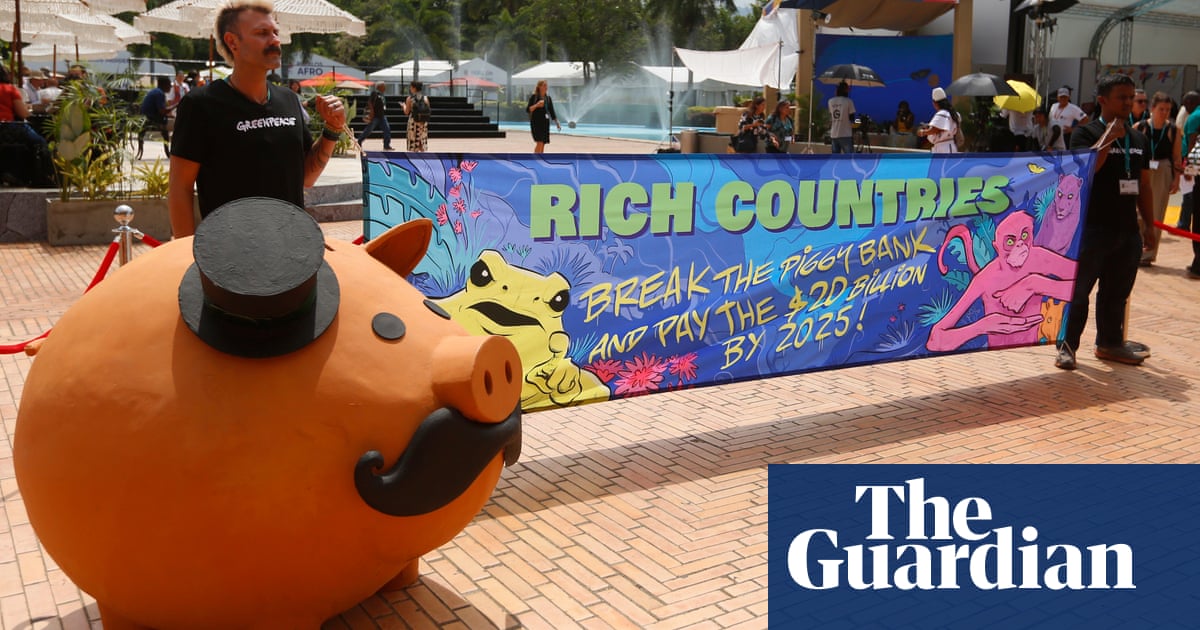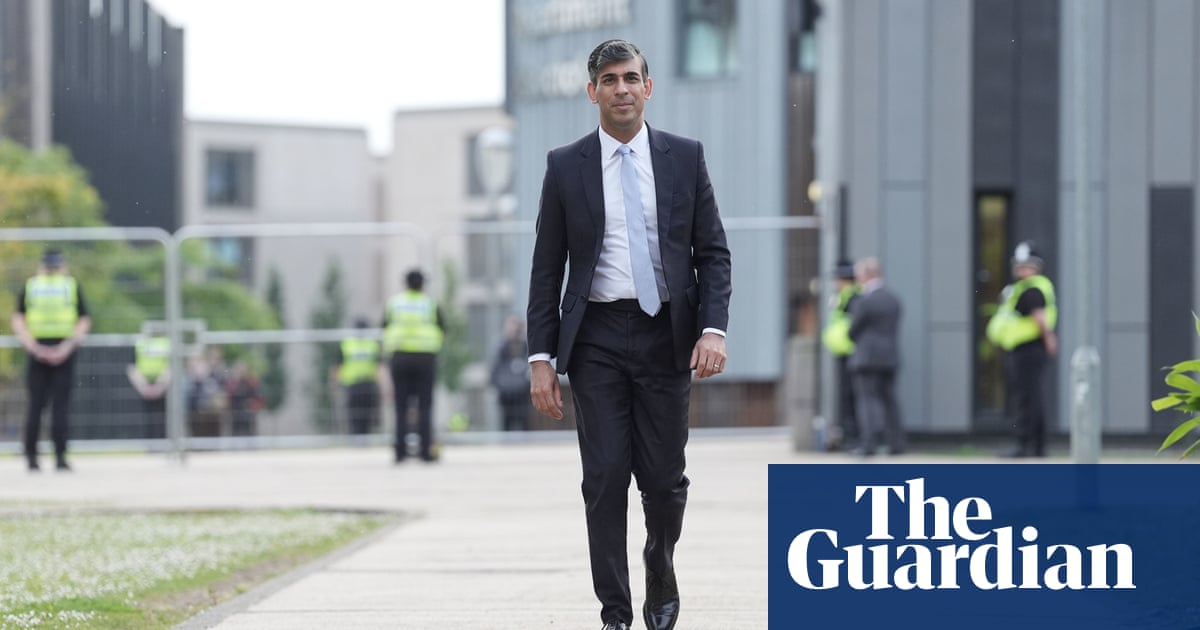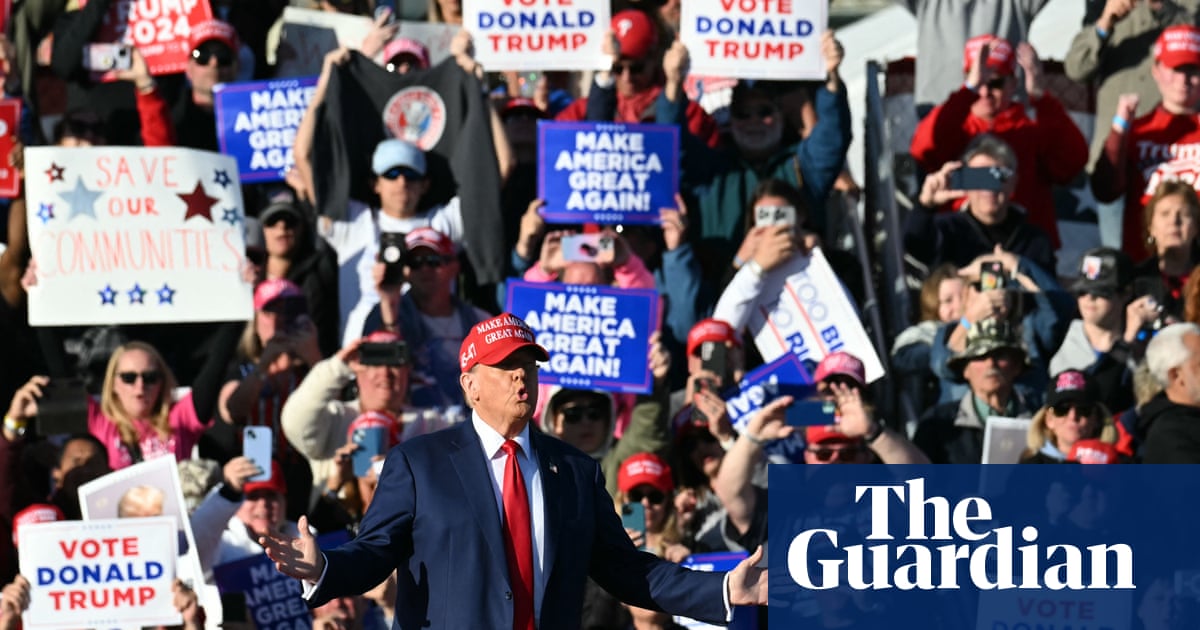Experts agree that the world needs $700bn (£539bn) a year to restore nature – but no one knows where the money is going to come from, and anger is building about rich countries failing to pay their share.
With representatives of nearly 200 countries gathered in Colombia for the UN Cop16 biodiversity summit, the question of who will fund conservation and how those funds will be distributed is a key battleground – and as negotiations push into their second week, frustration is growing at the lack of movement.
In their first submission to the negotiations, the Africa Group (representing the African nations, who have opted to negotiate as a bloc) said it was “deeply concerned” about the progress being made. It said the idea that wealthy countries would reach their 2025 finance target – the deadline for which is three months away – was “wishful thinking”.
The headline figure agreed on by countries at Cop15 in 2022 was to generate $700bn a year in finance for nature, beginning with $200bn a year by 2030. Scientists estimated that $700bn is the amount required to sustainably manage biodiversity and halt the destruction of ecosystems and species. That figure includes all financing – including from the private sector, non-profits, NGOs, and governments. Within it, richer countries have promised to contribute $20bn a year of public funds to poorer countries by 2025.
But those funds have proven slow to materialise. On Monday, dubbed “finance day” at the talks, eight countries, including the UK, Germany, France and Norway, announced $163m in new pledges.
Alice Jay, director of international relations at Campaign for Nature, said that while they welcomed these new commitments, closing the finance gap “would require them to announce $300m each month from now to 2025, and then keep that up each year until 2030.”
Oscar Soria, director of thinktank The Common Initiative, described the amount as “paltry”. He said negotiations had been in gridlock in the first week and “the most contentious issues revolved around biodiversity finance”.
“Countries from the global south expect more from the global north,” said Nigeria environment minister Dr Iziaq Kunle Salako. “Finance is key in the context of implementing all the targets.”
“We cannot ignore the fact that one of the main factors limiting progress is the lack of finance,” agreed Inger Andersen, head of the UN Environment Programme (UNEP), explaining that resource mobilisation is central to discussions because it is central to enabling developing nations – which contain the world’s globally important ecosystems – to implement their action plans.
Rich countries failing to contribute
So far, the majority of rich countries appear to be contributing less than half of their “fair share” of biodiversity finance, according to a report released ahead of the UN meeting. As of 2022 (the latest year for which data is available and before the Cop15 deal was signed) wealthy countries which signed the agreement provided $10.95bn in biodiversity funding, according to the report by the Overseas Development Institute (ODI) and Campaign for Nature.
It is not known how much was donated in 2023 or 2024, but ODI research found minimal new announcements of finance since Cop15, and analysis by research organisation BloombergNEF found no evidence of new and substantial public money committed to biodiversity in 2024.
“Financing is a currency of trust,” said Mark Opel, the finance lead at Campaign for Nature. “It is fundamental to building trust between the global north and the global south.”
It is not just about the quantity – the quality is equally important. There is no globally agreed definition of biodiversity finance, and donor countries sometimes give money to projects that only partially benefit nature – such as food production – and call it “biodiversity-related” funding.
A large chunk of the $700bn was expected to come from rewiring $500bn of environmentally damaging subsidies. Collectively, countries spend $1.25tn on subsidies for agriculture, fossil fuel development, and other industries that destroy biodiversity, according to a 2023 report by the World Bank. All countries were meant to identify harmful subsidies in their public spending by 2025, but so far only 36 have released information. “This is a point on which almost no progress has been made,” said Soria.
Also on the table is the question of whether increased debt should count as finance. Broadly, the countries with the most intact biodiversity are also the least developed – and the most indebted.
An Independent Expert Group report released in October shows countries most exposed to climate change and nature loss are increasingly having to borrow to fund disaster response and adaptation. Debts are rising and becoming more expensive, meaning countries are less able to invest in nature conservation and climate resilience. “Many low and middle-income countries are facing a ‘triple’ crisis not of their own making,” said Vera Songwe, former UN under-secretary general and co-chair of the review. “Unless the international community collectively takes measures to address this, countries are not going to be able to pursue the climate resilient, low-carbon, nature-positive growth which they need.”
But nature funding to these countries in the form of loans has been on the rise. The typical model is to offer countries loans at cheaper interest rates, on condition they meet certain nature preservation goals. About 80% of the increase in funding from 2021 to 2022 was in the form of loans, not grants, according to unpublished estimates from Campaign for Nature.
France, for example, has given 87% of its biodiversity contributions in the form of loans. Climate justice activists argue that this money should be given as grants to save poorer countries falling into a vicious circle of indebtedness.
The African group and Latin America group are pushing for official recognition of how debt burdens impact poor countries, while countries including France, the UK and China are against this.
Who distributes the money?
Countries are also locked into conflict over how funding is distributed. The current mechanism is the Global Biodiversity Framework Fund (GBFF) which was created at Cop15 in Montreal as a way for countries to make their finance contributions. It currently sits within the Global Environment Facility (GEF).
During negotiations, however, many developing countries (including Brazil and the Africa group), have argued this should be put in a separate fund because they say it is burdensome to access and controlled by wealthy nations. Wealthy countries, including Europe, Canada, the UK and Japan, are among those saying it should stay where it is. The Democratic Republic of Congo (DRC) nearly blocked the nature deal from being signed in 2022 due to anger over GEF carrying all the cash.
Out of the 22 projects approved by the GBFF so far, 30% of funds have gone via WWF-US for work in developing countries, according to analysis by the campaign group Survival International, which has raised concerns about a lack of funds reaching Indigenous people and local groups.
In the meantime, as NGOs at the negotiation have emphasised, the clock is ticking. Progress on finance is crucial to the rest of negotiations moving forward, said Bernadette Fischler Hooper, global advocacy lead at WWF.
“It is the hottest of all the potatoes. It’s the core of the atom and everything else revolves around it.”



